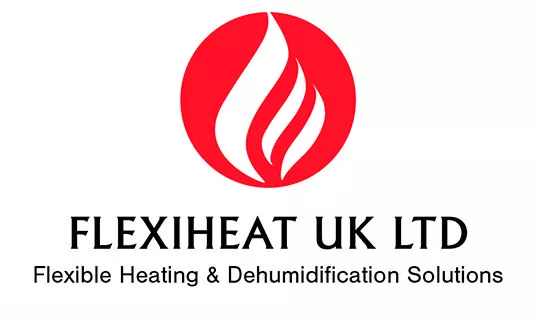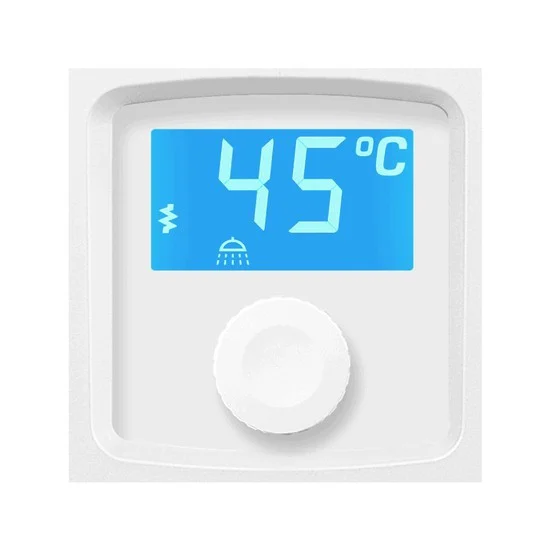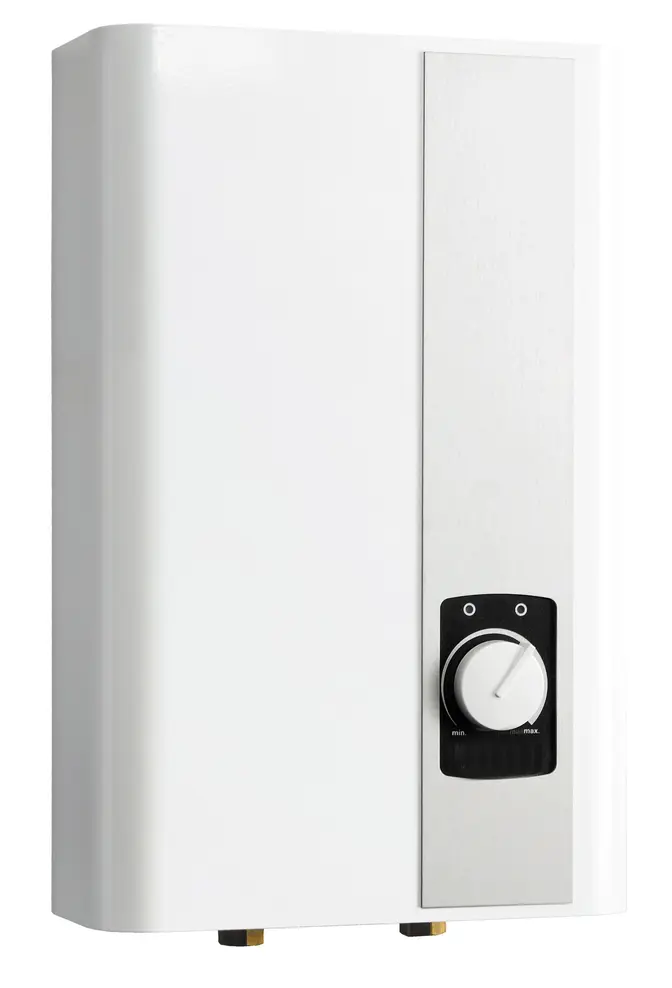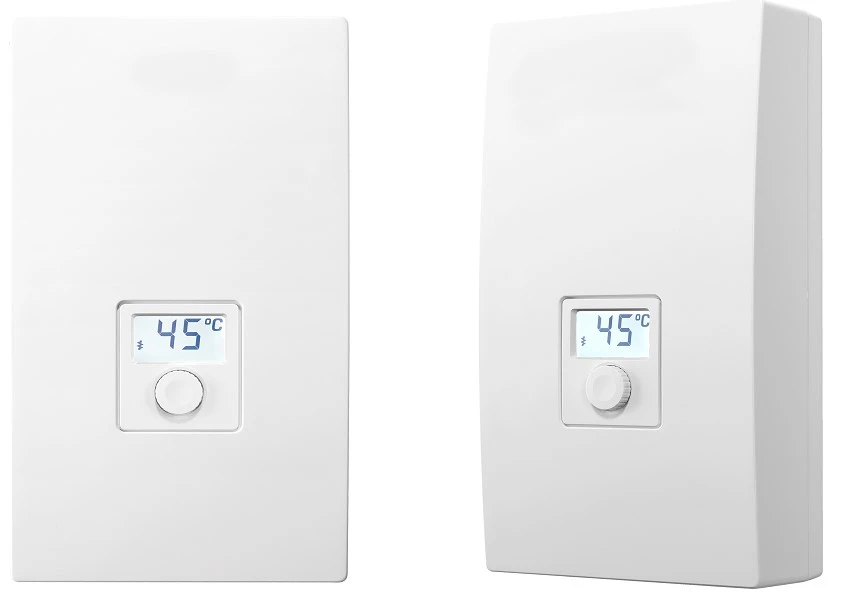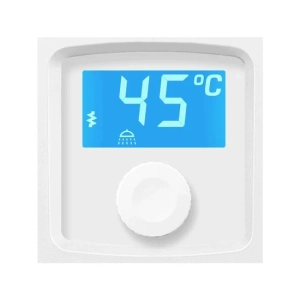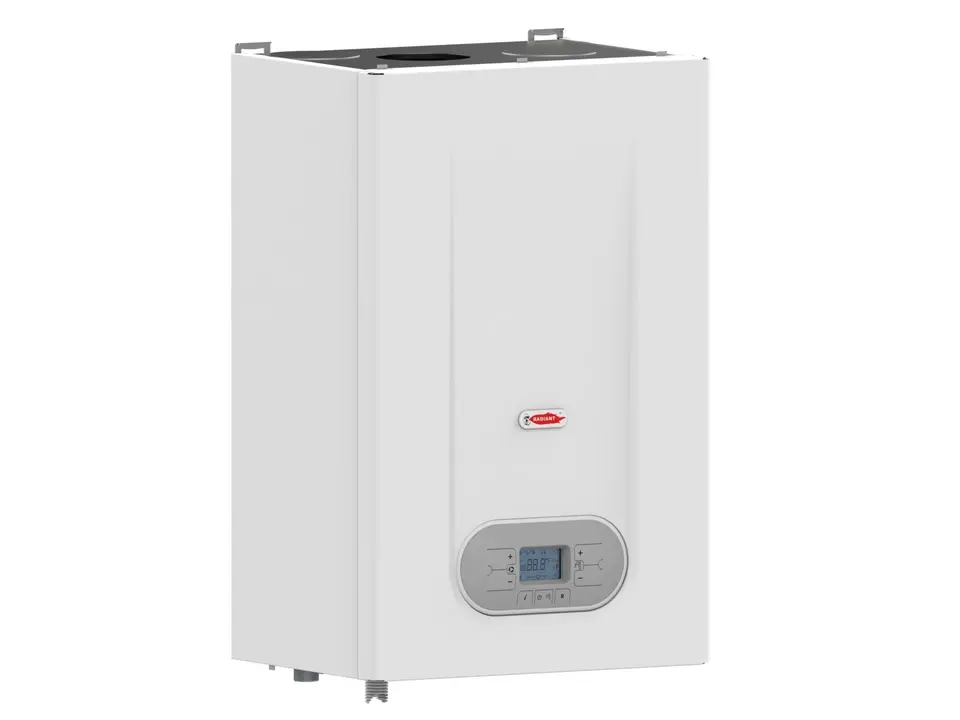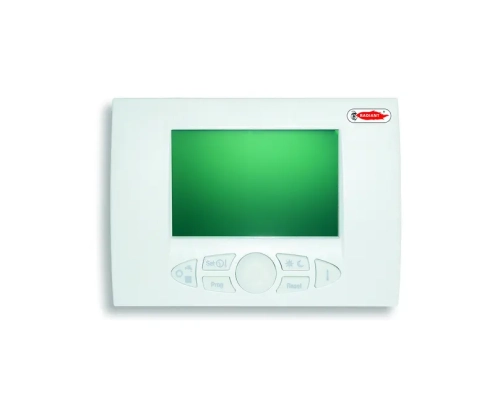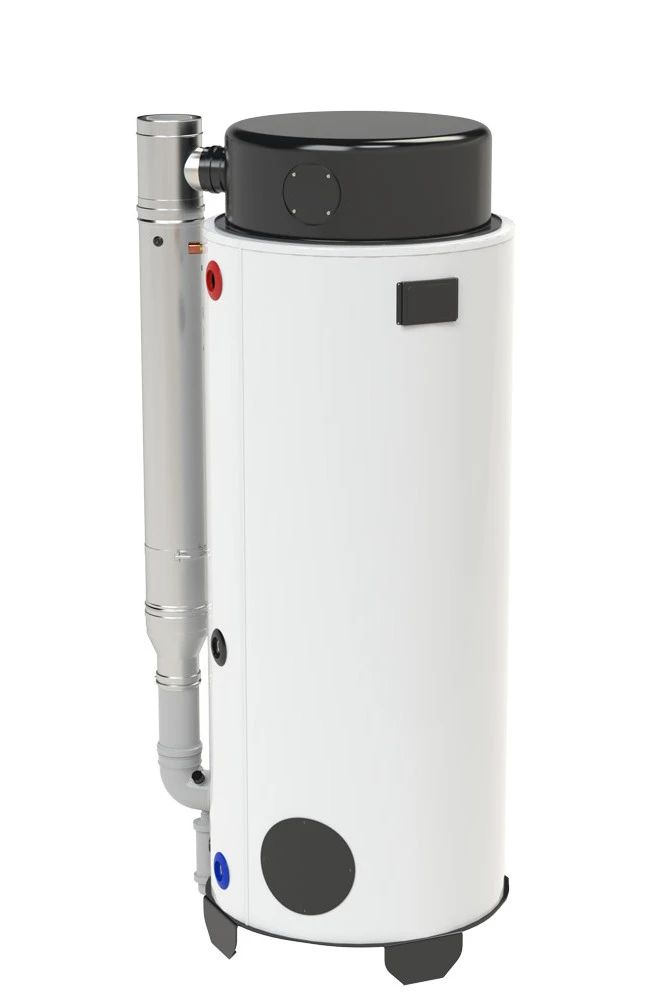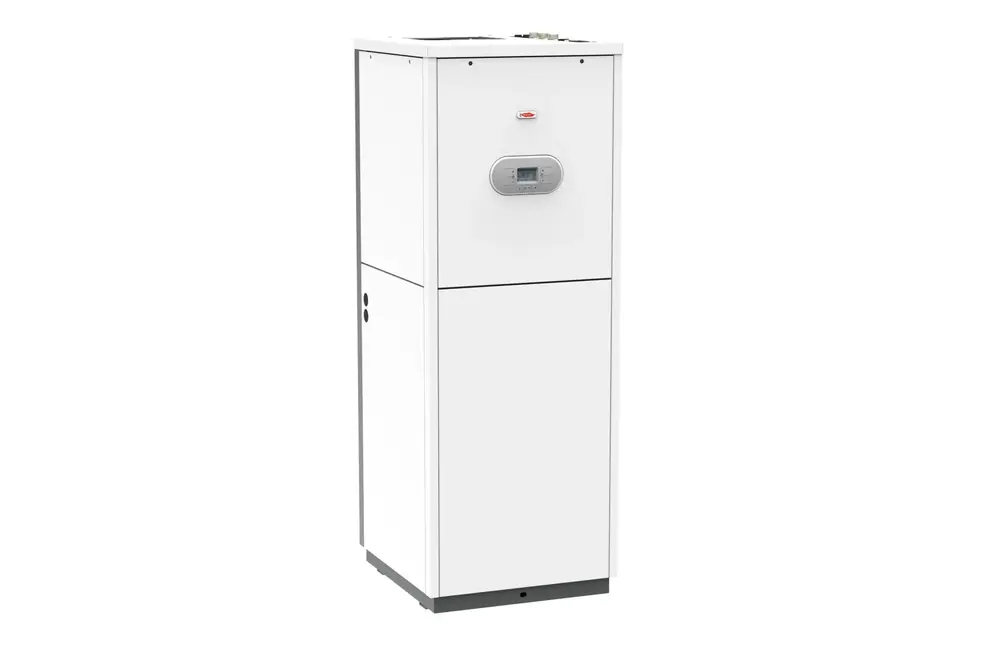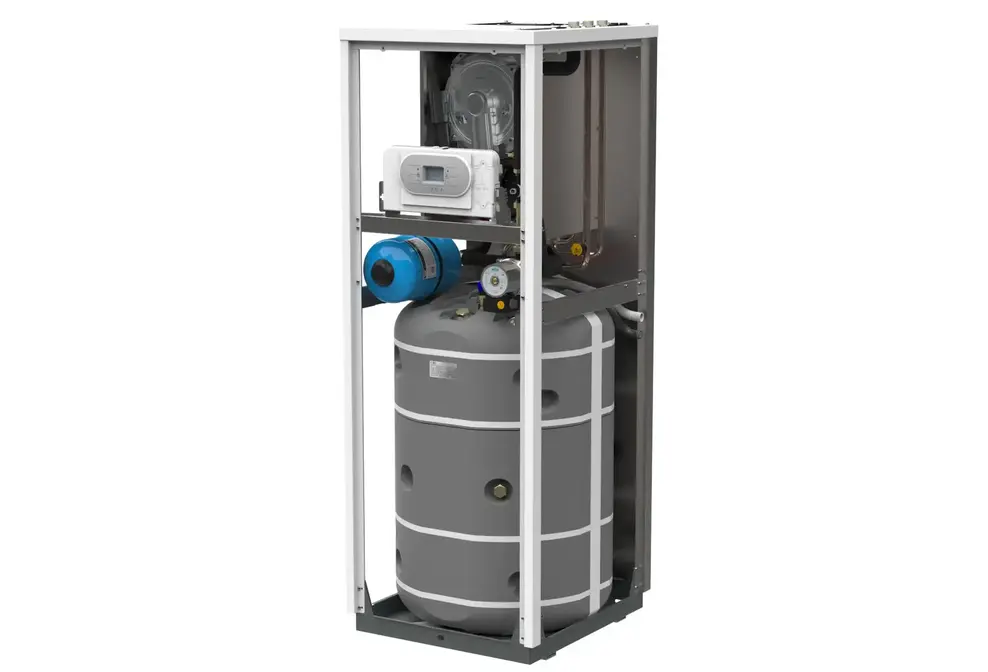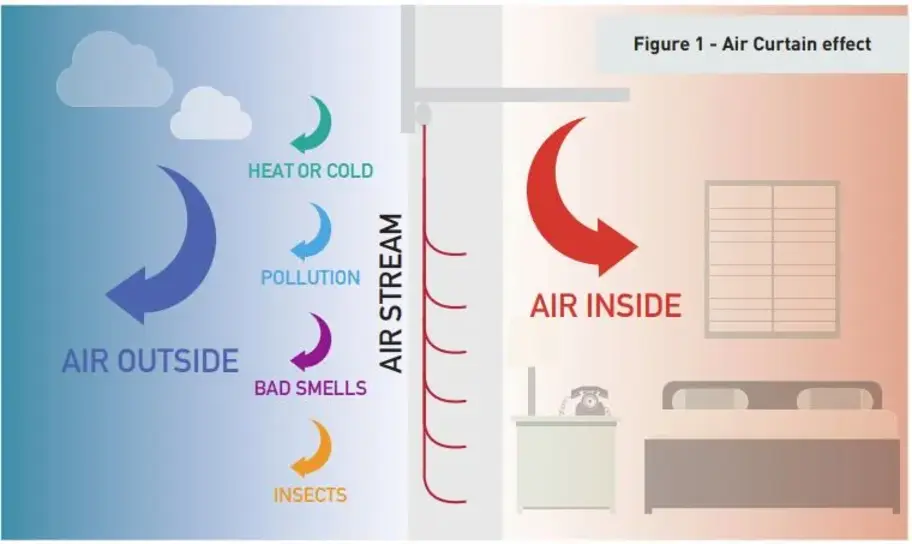Whole house electric tankless water heater UK
Whole house electric tankless water heater UK
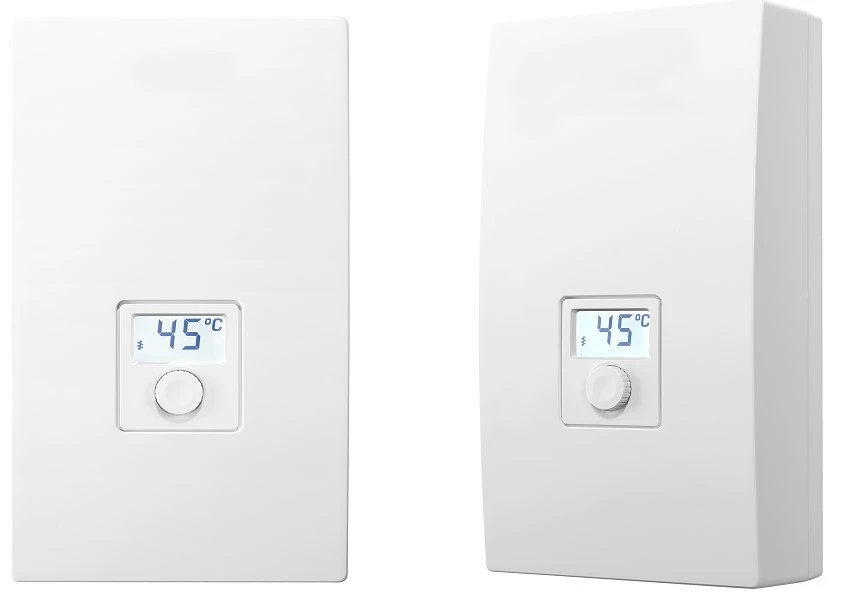
Whole house electric tankless water heaters from Flexiheat UK an alternative or replacement for tank-type water heaters
A whole house electric tankless water heater has become highly desirable in the UK due to its ability to provide unlimited domestic hot water instantly, without any waiting time or the need for water storage. Instantaneous water heaters have a compact design and can be easily installed in tight spaces, such as a kitchen cupboard or something similar.
While the statements above are correct, it is important to recognise some limitations, such as the limit on the number of outlets that can be used simultaneously, the need for close proximity to hot water outlets, and the need for a three-phase electric supply to power a whole home’s energy-efficient tankless water heater.
Key Point
- You require a 3 phase power supply to have a viable whole house electric tankless water heater in the UK
Energy efficient water heating
With rising energy prices, many homeowners in the UK are looking for ways to cut energy costs and make their homes more energy efficient. One way to do this is by installing an electric tankless water heater, also known as an instantaneous water heater or demand-type water heater, is one way to do this. Tankless water heaters provide domestic hot water instantly, as needed, eliminating the need to constantly heat and reheat a tank of water like traditional tank-type water heaters. This can lead to significant energy savings, making whole house electric tankless water heaters an attractive option for eco-conscious homeowners.
How do tankless water heaters work?
Tankless water heaters work differently than traditional water heaters that use a storage tank. When you turn on a hot water tap, cold water travels into the tankless unit. Inside the unit, an electric element heats the water instantaneously before sending it to the tap or shower. The unit directly heats the water without storing it, ensuring you never run out of hot water. Even when hot water isn’t in use, traditional water heaters with storage tanks must constantly reheat and maintain water temperature, resulting in energy waste.
Benefits of whole house electric tankless water heaters
There are several key benefits that make whole house electric tankless water heaters a smart choice in UK homes:
Energy efficient hot water
Instantaneous water heaters only heat water when needed, rather than maintaining a whole tank of water at temperature constantly. This results in major energy savings compared to traditional water heaters. Homeowners can save 20% to 60% on water heating costs.
Continuous domestic hot water
Instantaneous water heaters provide an unlimited supply of hot water on demand. You’ll never run out of hot water for showers, washing dishes, doing laundry, and more. The water heater activates when hot water is needed and shuts off when not in use.
Space Savings
Instantaneous water heaters are compact and mount on a wall, freeing up floor space that standard storage hot water cylinders water heaters use. This makes them a great choice for smaller homes or properties, such as flats, etc.
Long Lasting
Tankless heaters last up to 20 years, twice as long as traditional storage hot water cylinders. The lack of a water storage tank increases their lifespan.
Environmentally Friendly
The energy efficiency of tankless heaters means lower carbon emissions. Less electricity is required for water heating.
Safety
With no hot water storage tank that standard water heaters have, there is less risk of leaks or rusting. Tankless water heaters are safer, provide more reliable hot water, and are easier to install.
Factors to consider when choosing an entire house tankless unit
If you’re considering switching to a whole house tankless water heater, there are a few important factors to take into account:
Power Rating: The correct power rating ensures that your tankless unit can handle your household’s hot water demand. Look for a power rating of 18–27 kW for a whole house appliance or even 36kW depending on your demands.
Flow Rate: The water flow rate, measured in litres per minute (LPM), must meet your household’s peak hot water needs. The electric water heater appliance’s power ratings directly influence the heated water flow rate’s capacity or output.
Energy Source: Electric tankless heaters often make the most sense for UK homes. Make sure your electric system can handle the power demands.
Size: Choose the appropriate size tankless heater for your home’s water heating demands, number of bathrooms, etc. An undersized unit won’t meet your hot water needs.
Location: Pick an appropriate indoor location with adequate space and accessibility.
Efficiency Rating: Look for a high energy efficiency rating to maximise savings.
Product range
Our electric tankless hot water heaters have four power ratings, or output ranges, in “one” tankless water heater unit. Except for the 27kW and 36kW electric instantaneous water heaters, which feature a single power setting.
For example, our 9kW to 15kW electric instant water heater allows consumers to pick power ratings of 9kW, 11kW, 12kW, or 15kW in one model, while our 17kW to 24kW instant water heater may be adjusted to 17kW, 18kW, 21kW, or 24kW output.
The cold water mains temperature at the deepest winter times is typically 10 degrees Celsius, thus an average temperature rise of 30 degrees Celsius is necessary to provide hot water for usage in the winter months. The data below shows the performance at a temperature rise or Δt = 30
| Power output of the tankless water heaters | 9kW to 15kW power ratings | 17kW to 24kW power ratings | 27kW | 36kw |
| Energy efficiency class | A | A | A | A |
| Heat capacity ( power setting options) | 9/11/12/15 kW | 17/18/21/24 kW | 27 kW | 36 kW |
| Power supply – All require a 3 Phase power supply | 400V 3N~ | 400V 3N~ | 400V 3N~ | 400V 3N~ |
| Mains water supply pressure (Bar) min – maximum | 1 to 10 | 1 to 10 | 1 to 10 | 1 to 6 |
| Hot water flow rate at Δt=30 in litres per minute | 4.3/5.2/5.8/7.2 | 8.1/8.7/10.1/11.6 | 13 | 17.3 |
| Rated current (Amps) | 3 x 13/15.9/17.3/21.7 | 3 x 24.6/26/30.3/34.6 | 3 x 39 | 3 x 52 |
| Dimensions – W x D x H (in mm) | 245 x 126 x 440 | 245 x 126 x 440 | 245 x 126 x 440 | 315 x 140 x 492 |
Please note that this range of compact instantaneous water heaters requires a minimum flow of 2.5 litres per minute to start heating the water. If the flow rate is lower than this point, they will not operate.
Our 9kW to 27kW instantaneous water heaters feature a LCD display showing the tankless water heaters set temperature
and our 36kW tankless water heater has a traditional temperature dial and look like this
Benefits of Going Tankless for Whole House Water Heating
Switching to a whole house electric tankless water heater provides a range of benefits:
- Save significantly on energy costs by only heating water on demand
- Enjoy hot water with an unlimited supply of continuous hot water for all your needs
- Free up extra space by eliminating a storage electric water heater
- Reduce your home’s environmental impact with an energy efficient system
- Enjoy convenience, reliability, and safety with an electric on demand hot water tankless unit
- Get a long-lasting water heater that will serve your property for many years
By going tankless for your whole house, you can gain energy savings, unlimited hot water, extra space, and peace of mind knowing you have an eco-friendly, highly efficient water heating solution meeting your household’s needs.
Installing Your New Tankless Water Heater
Once you select the right electric tankless water heater model for your home, hire a qualified plumber for installation. Proper installation is key to maximising efficiency and providing hot water performance. Key steps include:
- Select an appropriate indoor location that allows access to the instant hot water heater; they are a very compact design, so this shouldn’t be an issue.
- Make any necessary electrical upgrades to handle the instant hot water heater requirements.
- Electricity supply: ensure you have properly sized electric cables and breakers.
- Connect the water supply pipes with components such as isolating valves and a filter on the cold water feed to the water heater.
- Insulate water pipes to limit heat loss to sinks or the shower.
- With a tankless water heater tailored to your specific home set-up, you’ll get the right choice with superior function without wasting energy and benefiting from energy savings for years to come.
Going tankless is the smart choice
With rising energy prices, whole house electric tankless water heaters make increasing sense for eco-friendly UK homeowners looking to save on costs. By only heating water on demand, tankless heaters provide endless hot water while being much more energy efficient than traditional storage tank heaters. Choosing the right size unit with professional installation provides a long-lasting, highly effective hot water solution. Going tankless can make your home more sustainable while cutting your energy bills. It’s the smart choice to enjoy reliable heated water whenever you need it.
So if you require a price, check stock or to purchase one of electric water heaters for entire home hot water needs Please contact us on 01202 822221 or use the email contact form .
